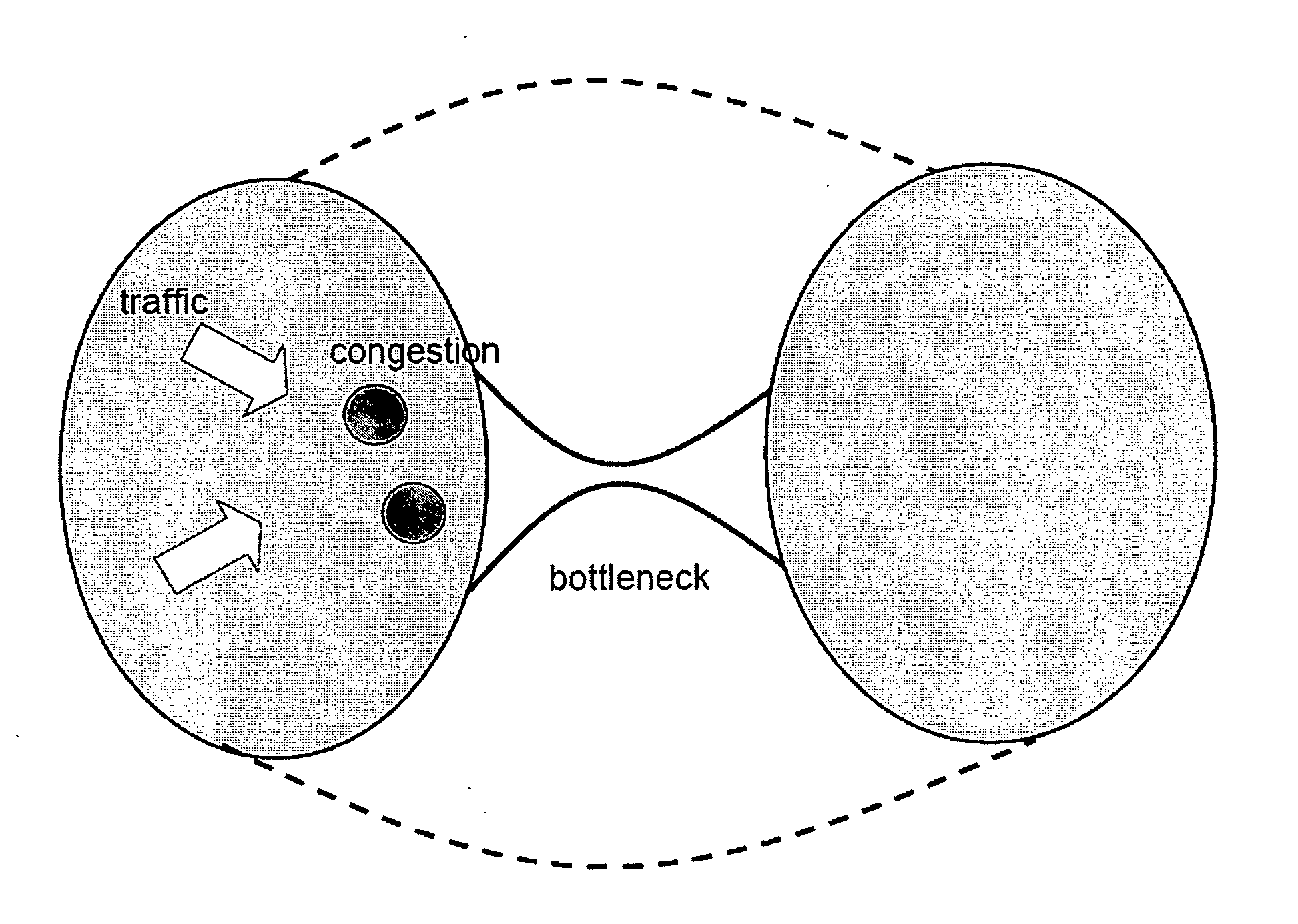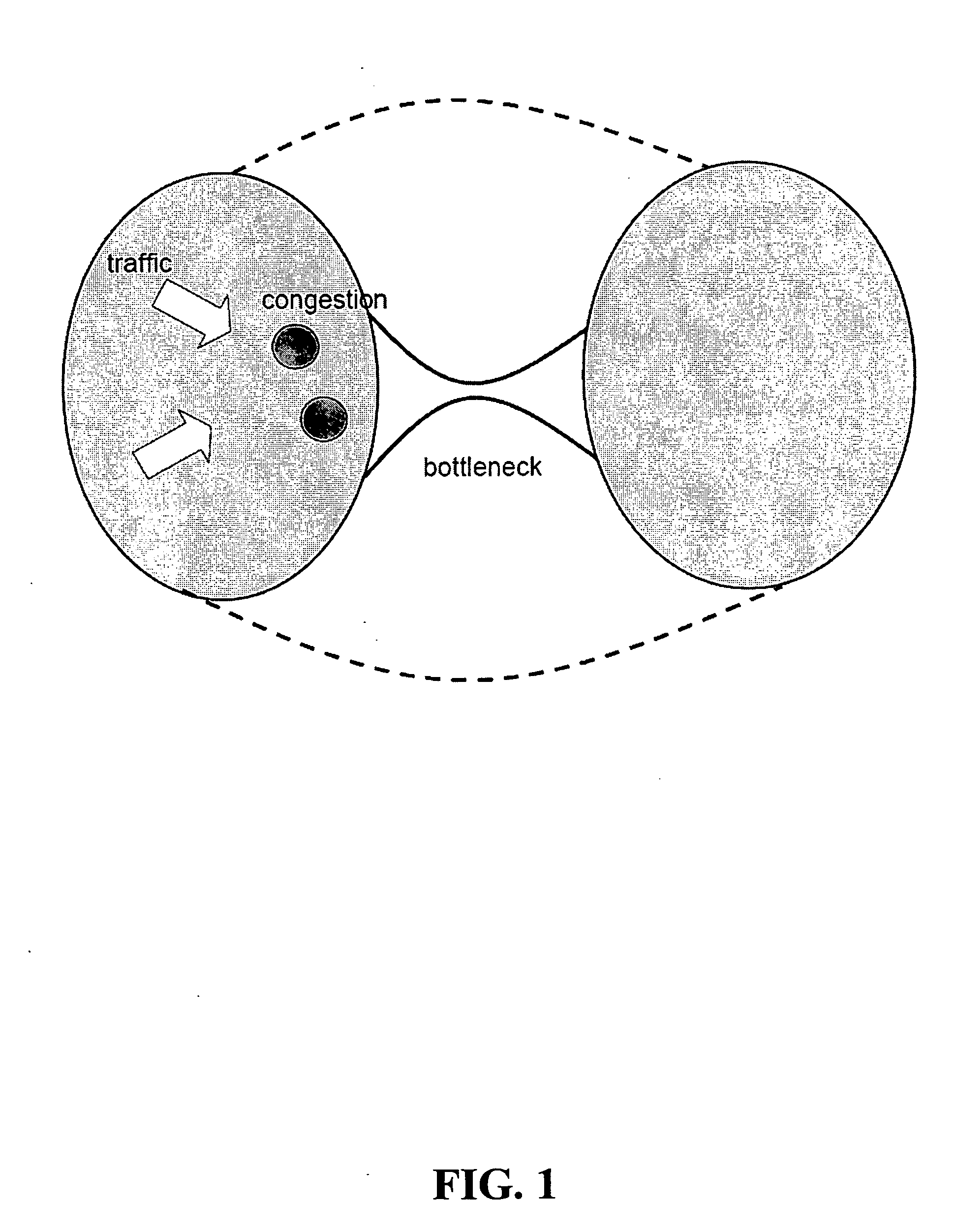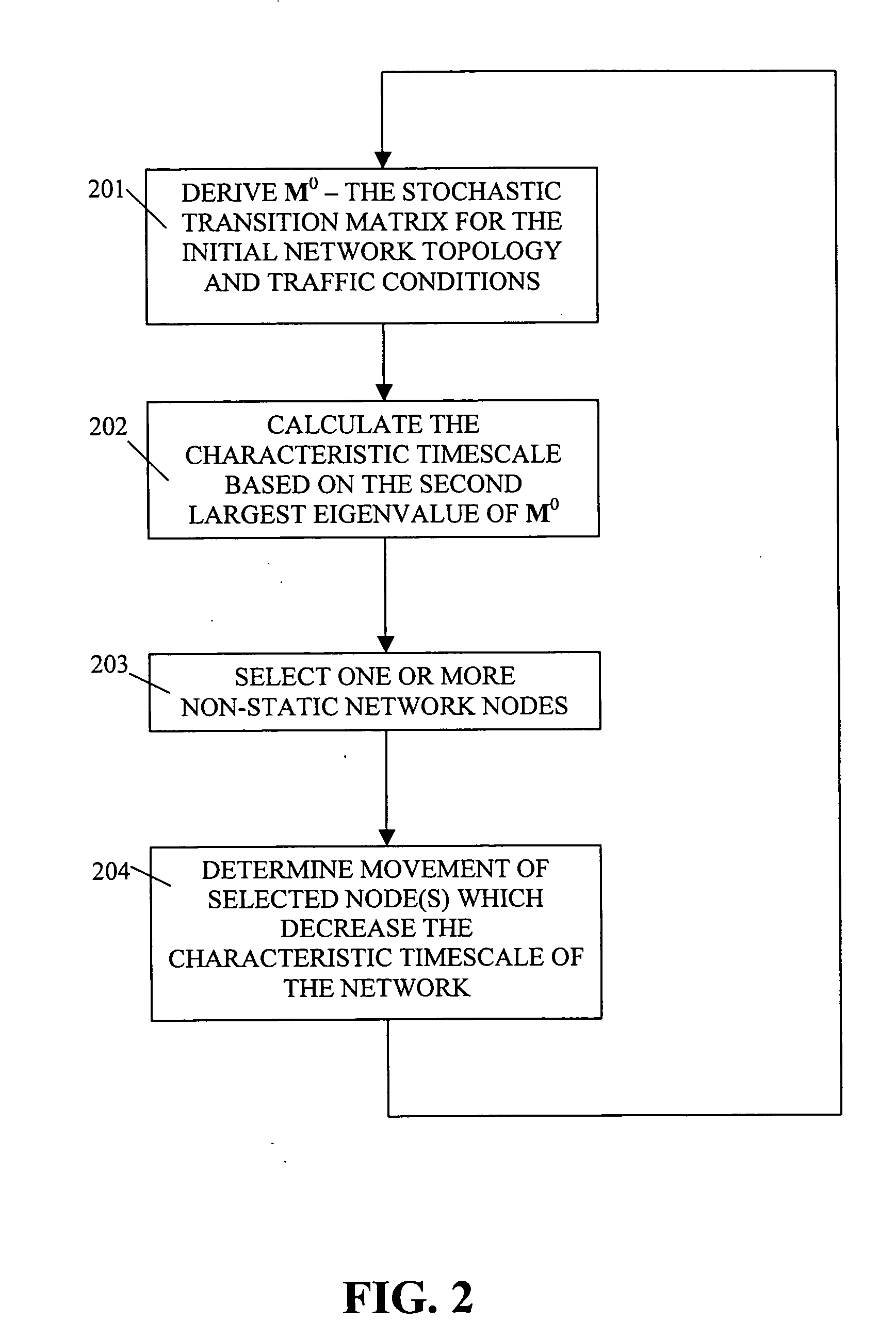Method and apparatus for dynamically reducing end-to-end delay in multi-hop wireless networks in response to changing traffic conditions
a wireless network and traffic condition technology, applied in data switching networks, instruments, frequency-division multiplexes, etc., can solve problems such as inability to overcome, and achieve the effect of reducing the mean end-to-end network transmission delay
- Summary
- Abstract
- Description
- Claims
- Application Information
AI Technical Summary
Benefits of technology
Problems solved by technology
Method used
Image
Examples
Embodiment Construction
Introduction and Summary
[0013]FIG. 1 shows an abstract view of an illustrative wireless communications network in which a “funneling” effect occurs at a bottleneck. As can be seen in the figure, traffic going across the bottleneck from the left half of the network to the right half of the network has to “squeeze” through links upstream of the bottleneck. This can cause congestion elsewhere in the network (as shown by the darker patches in the figure) even though the bottleneck bandwidth may be high. In accordance with the principles of the present invention, the solution to this problem is to siphon the traffic out early by creating new links (as shown by the dotted lines in the figure) that join network nodes away from the bottleneck link.
[0014] In order to describe the illustrative embodiments of the present invention, we will first derive a quickly computable metric that we note correlates well with the mean network transit time. Then, in accordance with certain illustrative e...
PUM
 Login to View More
Login to View More Abstract
Description
Claims
Application Information
 Login to View More
Login to View More - R&D
- Intellectual Property
- Life Sciences
- Materials
- Tech Scout
- Unparalleled Data Quality
- Higher Quality Content
- 60% Fewer Hallucinations
Browse by: Latest US Patents, China's latest patents, Technical Efficacy Thesaurus, Application Domain, Technology Topic, Popular Technical Reports.
© 2025 PatSnap. All rights reserved.Legal|Privacy policy|Modern Slavery Act Transparency Statement|Sitemap|About US| Contact US: help@patsnap.com



